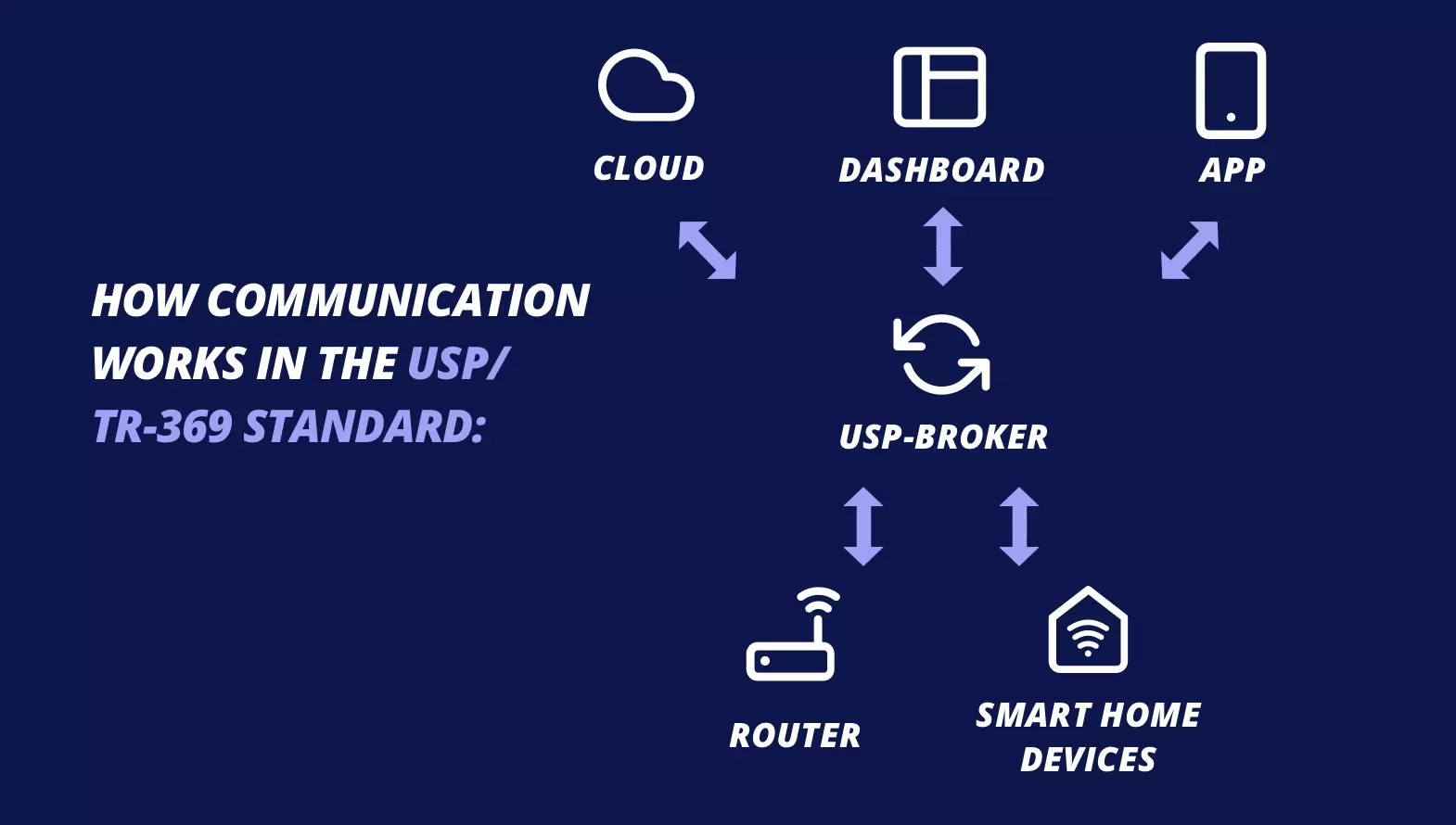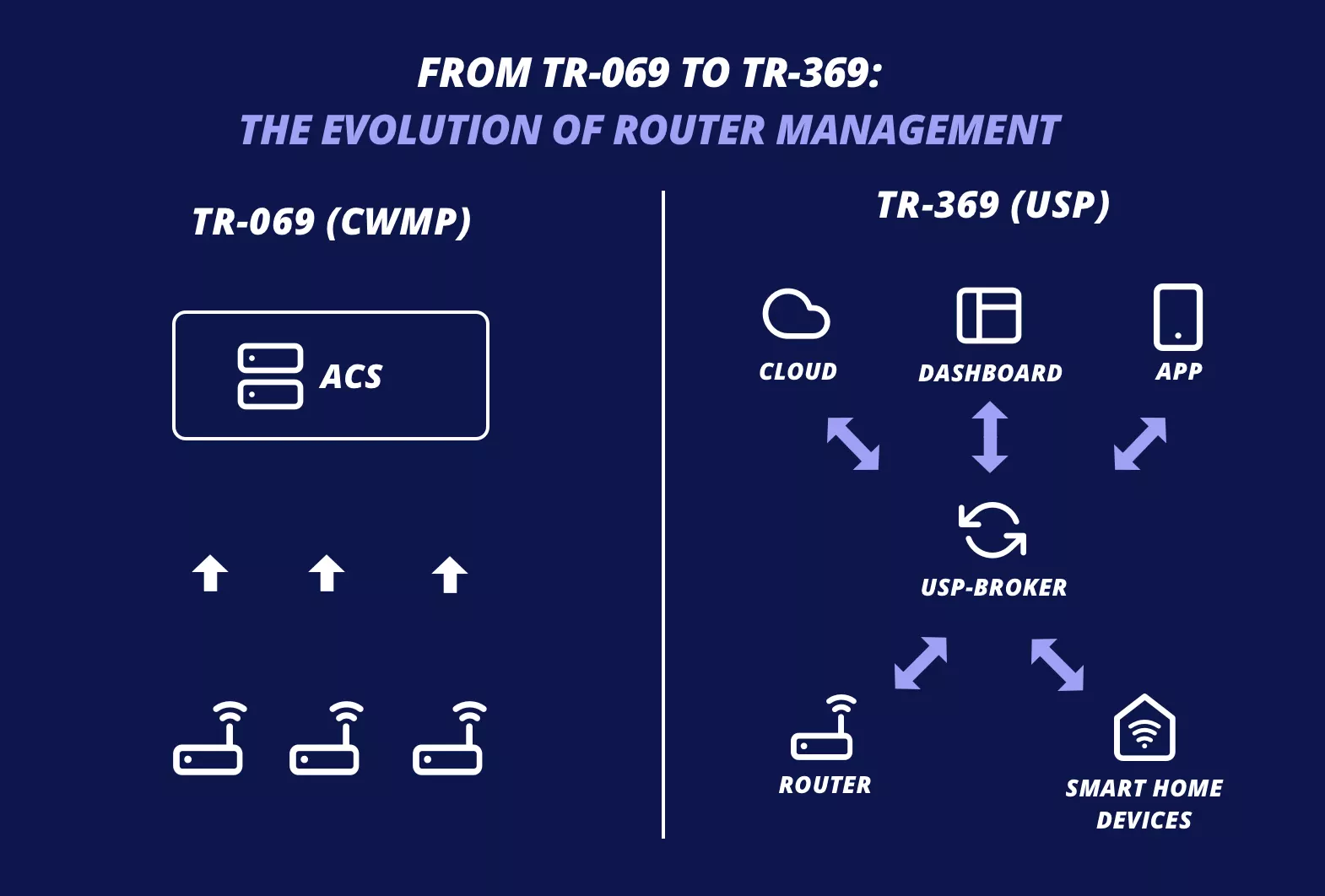The new standard for router management and network transparency
With TR-369, also known as User Services Platform (USP), has that Broadband Forum (BBF) created an international standard that standardizes communication between network devices and management systems.
The aim is to make router, gateway and IoT management secure, flexible and interoperable – a crucial basis for efficient customer support and automated self-service processes.
Why standardization is now crucial
The router market is fragmented: different firmware versions, proprietary APIs and unclear data models make development, diagnostics and support difficult.
This results in:
- increased effort in development and maintenance
- more complex support processes
- inconsistent customer experiences
USP/TR-369 solves these challenges through standardization. The protocol creates common structures for communication and data models, which include both technical efficiency as well better user experiences promotes.
Technical overview: architecture and functionality
USP defines a Publish/subscribe communication model. Swap in the process Agents (e.g. routers, IoT devices) and controller (e.g. dashboards, apps) bidirectionally output data.
Key technical features
- Secure communication: TLS encryption & role-based access control
- Flexible architecture: Multi-agent enabled, ideal for mesh and IoT environments
- Real time transmission: Push instead of pull – events are reported immediately
- Logs: WebSocket, MQTT, STOMP – all TLS-secured
- Standardised data models: Based on TR-181
- Edge Management: Control even without an active Internet connection

Comparing TR-069 vs. TR-369 (USP)
During TR-069 (CWMP) on a classic client-server architecture based, sets TR-369 (USP) On a Multi-controller model with Publish/subscribe mechanism. This allows multiple systems to communicate with one device at the same time, allowing more flexibility and real-time capabilities.
Even with the communications The two standards differ significantly: TR-069 uses HTTP/SOAP connections, while TR-369 uses modern protocols such as WebSocket, MQTT, and STOMP sets – all are continuously TLS-secured.
In terms of surety offers TR-369 with role-based authentication and end-to-end encryption offers a significantly higher level of protection than the older TR-069, which relies on simple authentication and SSL.
At Real-Time Behavior TR-369 replaces the pull principle (polling) of TR-069: Events and status changes are now actively transmitted via push notifications – a clear advantage for monitoring and automated error detection.
that data model Is in TR-369 dynamic and modular constructed, instead of statically as with TR-069. This makes it easier to expand device functions and adapt them to new requirements.
Even the area of application was significantly expanded: TR-069 was limited to routers and modems, while TR-369 was also available for IoT devices, mesh networks, and smart home infrastructures is suitable.
Finally, TR-369 is backwards compatible to TR-069 – existing systems can therefore be migrated gradually without completely replacing their infrastructure.
In short: TR-369 is not a simple update, but a fundamental technological change – towards more Real-Time Capability, Security, and Scalability in router and network management.

Market relevance: Why TR-369 is important for Internet service providers
For Internet Service Providers (ISPs), public utilities and network operators, TR-369 offers significant advantages:
- Real-Time Diagnostics: Routers provide status data automatically – Support detects faults before customers report them.
- Security & privacy: End-to-end encryption and role rights prevent unauthorized access.
- Future security: Maintained by Broadband Forum, guarantees long-term compatibility.
- Smart home integration: Ideal for mesh setups and IoT networks.
- investment protection: Existing TR-069 infrastructures can be gradually expanded.
Connect to self-service and automation
Self-service solutions such as MyProvider app use USP to intelligently integrate router data into customer interfaces.
The result:
- Automated fault diagnoses directly on the customer side
- Fewer hotline calls and ticket volumes
- Faster problem resolution thanks to real-time data
- Higher customer satisfaction through transparency and control
This connection between USP and self-service shows how technological standards and usability go hand in hand.
Further content:
conclusion
The USP/TR-369 standard defines the future of router management. It brings structure, security and real-time communication to an increasingly complex network landscape. For Internet providers and network operators, this is more than a technical upgrade – it is the path to more efficient processes, happier customers and scalable self-service solutions.
MyProvider supports this development by seamlessly integrating the capabilities of TR-369 – from router setup to real-time diagnostics.



